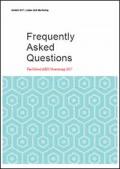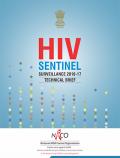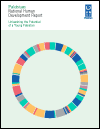What's New
Displaying results 1951 - 1960 of 4914
Resource | Publications,
Universal health coverage (UHC) means that all people can obtain the health services they need without suffering financial hardship. This report looks at how many people globally lack access to essential health services and how many are pushed into poverty or spending too much of their household budgets on health care expenses. It shows that, although they may have access to some health services, more than half of the world’s more than 7.3 billion people do not receive all of the essential services they need. In terms of financial protection, over 800 million people spend at least 10 percent of their household budgets to pay for health care, and about 100 million people are pushed into extreme poverty due to their health expenditures.

Resource | Reviews and Snapshots,
The country snapshot prepared by UNAIDS Regional Support Team for Asia and the Pacific and AIDS Data Hub provides information on the HIV epidemic and response in Fiji country.

Resource | Publications,
This report highlights the great achievements that have been made by the Global Fund partnership, supporting programs that have saved more than 22 million lives, while building healthier communities and stronger economies. We have bent the trend lines of tuberculosis and malaria – two of humanity’s ancient foes – and we have prevented AIDS from reaching its catastrophic potential.

Resource | Tools,
This document provides answers to questions that have been received frequently from UN staff, their national counterparts, and the global reporting focal points.
For more information on the Global AIDS Monitoring, please visit website (www.unaids.org/aidsreporting), or email us at aidsreporting@unaids.org.

Resource | Publications,
The Sustainable Development Goals (SDGs) are underpinned by the need for greater partnership and an interconnected approach to development - a central lesson from the AIDS response and critical requirement to successfully Fast-Track towards the end of AIDS. This document is a report of the United Nations Secretary-General Special Envoys for HIV/AIDS.

Resource | Fact Sheets,
According to MENAHRA, these are what we can do to improve adherence to treatment and access to services:
- Awareness raising and training
- Promotion of availability of services
- Service development
- Accountability and support
- Evaluation and research

Resource | Reviews and Snapshots,
Drawing on the analyses of a limited number of indicators with available data, this snapshot aims to support discussions by policy makers on priorities in ASEAN region and actions required to achieve the 2030 Agenda for Sustainable Development.
The snapshot presents analyses to address the following two sets of questions regarding progress in ASEAN towards achieving SDGs 1-16, benchmarked against the Asia-Pacific regional target values.

Resource | Publications,
HSS 2016-17 highlights that the HIV epidemic continues to be heterogenic in India with varied HIV prevalence by location and population. These epidemiological findings need to be taken into consideration for tailoring the responses by all stakeholders including policy makers, programme managers, research scholars, community and civil society.

Resource | Publications,
The 2017 Pakistan National Human Development Report (NHDR) focuses on the country’s youth as a critical force for shaping human development in the country. This Report covers three drivers of youth empowerment – education, employment and engagement – with the objective of informing public policy discourse and improving the policy landscape for young people.

Resource | Fact Sheets,
Nepal has been monitoring HIV and STI epidemic by collecting routine data from the following sources:
- Case Reporting of HIV and STI
- Integrated Biological and Behavioral Surveillance (IBBS) Survey
- Monitoring of HIV Drug Resistance
- Size estimation of Key Populations
- HIV Infection Estimations and Projections
- HIV Surveillance





